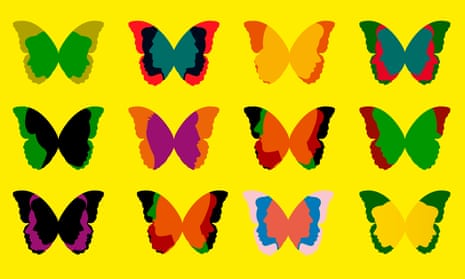In April 2015, after a long and very public career, first as a male decathlete, then as a reality TV star, Caitlyn Jenner announced to the world she was a trans woman. Asked about her sexuality, Jenner explained that she had always been heterosexual, and indeed she had fathered six children in three marriages. She understood, though, that many people were confused about the distinction between sexual orientation and gender identity, and so she said: “Let’s go with ‘asexual’ for now.”
Isn’t it up to her? What could be more personal than the question of who she is – what she is? Isn’t your identity, as people often say, “your truth”? The question is straightforward; the answer is anything but. And that’s because a seismic fault line runs through contemporary talk of identity, regularly issuing tremors and quakes. Your identity is meant to be the truth of who you are. But what’s the truth about identity?
An identity, at its simplest, is a label we apply to ourselves and to others. Your gender. Your sexuality. Your class, nationality, ethnicity, region, religion, to start a list of categories. (Raise your hand if you are a straight, male, working-class, Afro-Latinx evangelical US southerner.) Labels always come with rules of ascription. When we apply a label to ourselves, we’re accepting that we have some qualifying trait – say, Latin or African ancestry, male or female sex organs, attractions to one gender or another, the right to a German passport.
More important, there are things we believe we should feel and think and do as a result. Identities, for the people who have them, are not inert facts; they are living guides. Women and men dress the way they do in part because they’re women and men. Given that we connect these labels with our behaviour, it’s natural to expect other people to do the same. And that means we’re going to have to tell other people not just which labels they can claim, but what they must do if they are to fit our labels. So identities don’t just affect our own behaviour; they help determine how we treat other people.
At the same time, all the ascription conditions here are contested. Are you a trans woman if you haven’t transitioned? Is someone with seven European great-grandparents and one African one truly black? Would a Daughter of the American Revolution who renounced her American citizenship still be an American? So are the associated norms of behaviour: is a reform Jew less Jewish than an orthodox one? Is an effeminate man less of a man? Because identity, in the sense we typically use it these days, is a social category – something shared with vast numbers of other people – everything is up for negotiation and nothing is determined by individual fiat. In this sense, identity is at once loose and tight.
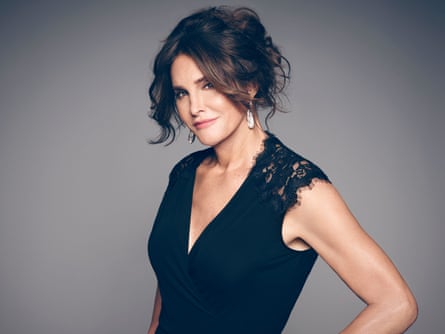
To say that the borders are contested is also to say that they are policed. Boys who default from gender norms of behaviour are deemed “sissies”; girls are “tomboys”. Some old-guard radical feminists, such as Ti-Grace Atkinson, Marge Piercy and Faith Ringgold, have suggested that trans women aren’t really women. Black authenticity, too, is a perennial battleground. Here’s Pusha T on Drake, in a recent, widely publicised rap beef: “Confused, always felt you weren’t Black enough / Afraid to grow it ’cause your ’fro wouldn’t nap enough.” Latinos sometimes hurl the insult “coconut” at other Latinos who “act white”, suggesting that deep down they’re not Latino at all.
So, in a liberal spirit, we could wonder: why not ditch the guards and adopt an open-border policy? Why not agree that people are whatever they say they are? We could follow the lead of Humpty Dumpty in Alice in Wonderland:
“I don’t know what you mean by ‘glory’,” Alice said. Humpty Dumpty smiled contemptuously. “Of course you don’t – till I tell you. I meant ‘there’s a nice knock-down argument for you!’” “But ‘glory’ doesn’t mean ‘a nice knock-down argument’,” Alice objected. “When I use a word,” Humpty Dumpty said, in rather a scornful tone, “it means just what I choose it to mean – neither more nor less.”
By the logic of Humpty Dumpty, everyone should be able to assume whatever identity they choose. There’s glory for you.
Or maybe not. Like all the words in our language, the identity labels we use are a common possession. Were everybody to follow Humpty Dumpty’s example, we simply couldn’t understand one another. If Toni Morrison isn’t a black woman, the term isn’t doing any work. The ability to apply identity labels in a broadly consistent way is what allows us to use them to tell people who someone is, and so, in particular, to tell others who we are ourselves. It’s because there’s some agreement about menswear that “man” is a useful label when you’re shopping. And labelling ourselves only helps others if it can guide expectations about what we will think, or feel, or do. “Lesbian” isn’t much use if you’re looking for a partner on Bumble unless it signifies a woman who might be open to sex with another woman.
If identity continues to vex us, we should bear in mind that this usage of the term is historically recent. Until the middle of the 20th century, in fact, nobody who was asked about a person’s identity would have mentioned race, sex, class, nationality, region or religion. When George Eliot writes in Middlemarch that Rosamond “was almost losing the sense of her identity”, it’s because she is faced with profoundly new experiences when she learns that the man she thinks she loves is hopelessly devoted to someone else. Identity here is totally personal.
Then sociologists such as Erik Erikson and Alvin Gouldner introduced the modern sense of the term in the 1950s and 60s. In recent decades, identity has exploded as a political theme; identity groups, especially marginalised ones, sought recognition and respect precisely as bearers of an identity. Yet talk of social identities – the identity of “identity politics” – often rubbed up against these earlier notions of authenticity. Hence the faultline I mentioned. Don’t try to tell me who I am: this motto will have power as long as Eliot’s sense of an innermost self contends with the modern sense of identity as a vehicle and vector of recognition.
***
Not all identities fit their bearers like a glove; sometimes we’re talking oven mitts. Over the years and around the world, taxi drivers, putting their expertise to the test, have sized me up. In São Paulo, I’ve been taken for a Brazilian and addressed in Portuguese; in Cape Town, I’ve been taken for a “Coloured” person; in Rome, for an Ethiopian; and one London cabbie refused to believe I didn’t speak Hindi. The Parisian who thought I was from Belgium perhaps took me for a Maghrebi; and, wearing a kaftan, I’ve faded into a crowd in Tangier. Puzzled by the combination of my accent and my appearance, once our ride is under way, taxi drivers regularly ask me where I was born. “In London,” I tell them, but that’s not what they really want to know. What they mean to ask is where my family came from originally. They’re wondering about my ancestry and all that might come with it.
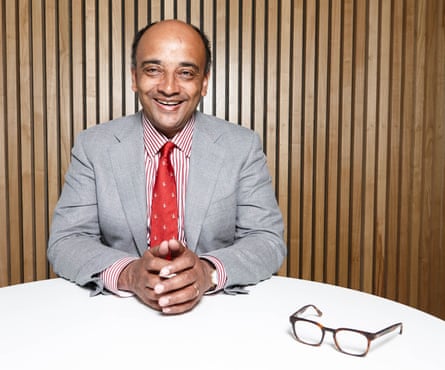
The answer to the question of origins is that I come from two families in two places pretty far apart. My mother was English, a countrywoman at heart, who in the 1950s was working for an anti-racist organisation in London that supported colonial students. It was called Racial Unity. That was how she met my father, a law student from Ghana (then the Gold Coast). He was an anticolonial activist, the president of the West African Students’ Union, and a British representative of Dr Kwame Nkrumah, who was to lead Ghana to independence in 1957. You might say she practised what she preached.
My father raised us with stories of his family, and one of the names he gave me, Akroma-Ampin, was that of the illustrious 18th-century general who founded his lineage. In a sense, though, it wasn’t really our family. Just as my mother’s people, being patrilineal, thought you belonged to your father’s family, my father’s, being matrilineal, thought you belonged to your mother’s. I could have told those taxi drivers I had no family at all.
“Identities,” the cultural theorist Stuart Hall once observed, “are the different names we give to the different ways we are positioned by, and position ourselves within the narratives of the past.” Yet it’s also true that the labels can sometimes displace the narrative. In the case of my “racial” ancestry, efficient identity experts come up with a summary: black father, white mother, grew up in Ghana and England – got it. I recall attending a sports day, a few decades ago, at a school in Dorset I’d attended as a preteen, and meeting the now elderly man who had been headmaster in my day. “You won’t remember me,” I apologised, as I introduced myself to him. Hearing my name, he brightened and took my hand warmly. “Of course I remember you,” he said. “You were our first coloured head boy.” That wasn’t a formulation that would have occurred to me at the time; but inasmuch as identities are social, my formulations weren’t the only ones that mattered.
And precisely because social identities continue to be shadowed by that precursor sense of an innermost self, the dance on the borderlines of identity can be delicate. Shaun King, the Black Lives Matters activist, speaks, dresses and wears his hair in ways that are marked as black. When reports circulated that both the parents cited on his birth certificate were white (though, not his biological father), his wife responded with an artful online post, calling his story “beautifully difficult”, and declaring: “What’s white about him is white, and what’s Black about him is Black and always has been from the time he was a child.” In other words, accept the mystery.
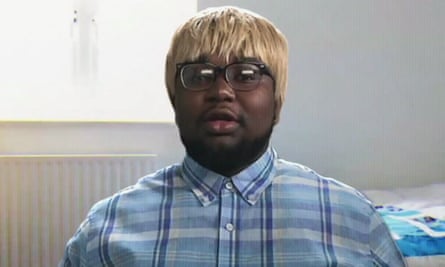
Mostly, people have. But there are limit cases. A much-loved episode of Donald Glover’s TV series Atlanta presents a mock reported segment about “Harrison Booth”, a black teenager (birth name: Antoine Smalls), who identifies as a 35-year-old white man. Preparing for his transition, he wears a button-down Oxford shirt, wanders through farmers’ markets, plays golf, and asks a bartender: “What IPA do you have on tap?”
In the real world, the German model Martina Adam has announced that she has transitioned to black (with the help of melanin-promoting hormones and various filler injections) and, citing a baptismal ceremony she underwent in Kenya, is to be called Malaika Kubwa. The public response was no more supportive than that which greeted the retired baseball great Sammy Sosa when he dramatically whitened his once dark visage.
There is a rich imaginative literature on African American “passing”, a groaning shelf that includes James Weldon Johnson’s The Autobiography of an Ex‑Colored Man (1912), Nella Larsen’s Passing (1929) and Philip Roth’s The Human Stain (2000). There’s also a rich tradition of such passing; millions of white Americans have unsuspected black ancestry. Going from white to black isn’t nearly as common. But most people knew how they felt about Rachel Dolezal, who, carefully permed and tanned, had officially identified herself as black and spent a year running the Spokane chapter of the National Association for the Advancement of Colored People, until she resigned amid suspicions that she’d fabricated reports of hate crimes she’d suffered. When her white midwestern parents outed her and sparked headlines, one black commentator suggested that Dolezal embraced “an a la carte blackness, in which you take the best parts, and leave the pain aside”. Dolezal now says she identifies as black, but not as African American. That’s a bid, though; it doesn’t count if there are no takers.
That identity is contested, then, doesn’t mean it’s up for grabs. We don’t own our words; other people get a say.
***
Identity norms are enforced in myriad ways, and the work that goes into entrenching them reveals their vulnerability. The fact that identities need to have some common meaning doesn’t require that we leave them just as they are. It’s obvious that conceptions of gender half a century ago suited some people better than others. No doubt many middle-class women were and are perfectly happy as managers of households and primary caregivers for children. (No doubt this arrangement suited many men, too.) But it left lots of women unsatisfied. The women’s movement challenged ideas about the proper places of women in the home and outside. Now, in much of the developed world, we mostly agree that sharing parenting more equally doesn’t make a woman less of a woman, or a man less of a man, and though the ideal of workplace equality remains unrealised, it is no longer controversial.
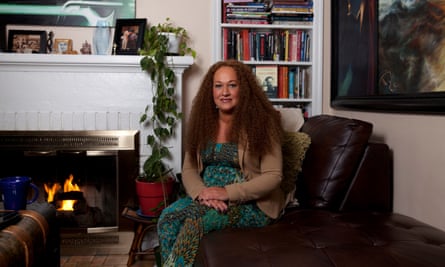
Being a real man or woman once meant being straight. That suited many people, but it was deeply unsatisfactory for those women and men who found their erotic attractions were to people of their own sex. A movement gained momentum in the North Atlantic world, and engaged in a long project of reshaping the general understanding of gender, so that being homosexual was no longer a defective way of being a man or woman. But in those long struggles, the advance guard of these movements couldn’t simply declare a new meaning for womanhood or manhood. They had to negotiate with others, women with men but also with other women, gay people with straight people but also with one another, to try to reconfigure the shared understandings that shape the opportunities available to us. The trans movement is a predictable extension of these earlier struggles.
When people responded to Jenner by saying she was just a man pretending to be a woman, they weren’t just being discourteous and unkind: they were taking the meaning of the words “man” and “woman” as fixed and non-negotiable and insisting on their right to use them as they always had. That’s what Republican legislators in North Carolina were doing when they passed a law in March 2016 denying trans people the right to use public bathrooms of the identity they claimed for themselves. When the Republican presidential candidate Donald Trump declared that Jenner could use any bathroom she chose at Trump Tower, Jenner, who supported him in the race, took him up on his offer, posting a video of herself entering a women’s room. It was an argument about rights, but it was also an argument about language.
At the same time, talk of the “LGBTQ community” sometimes runs aground because it seems to treat gender identity as akin to sexual orientation, and many trans activists are especially concerned to head off any confusion between the two. That’s why many transgender people would like to remove the “T” in “LGBT”. In the words of one Belfast-based trans woman columnist: “It’s not a sexuality. It’s a gender. It makes no more sense being included with LGB than if you were to add ‘female’ in there.” She explains that she’s now heterosexual, and asks, “when talking about issues that concern sexuality why is transgender included?” When trans women such as Jenner or the Wachowskis, the illustrious film-making siblings, decline to identify as lesbian, they may be responding to a sense that their gender identity should be considered separately from their sexual or affectional orientation.
***
“What I want to do is to widen the bandwidth of gender,” says Alex Drummond, the Cardiff psychologist and author and a trans woman, who decided to keep her beard, while also forgoing surgery or hormones. Drummond, who identifies as lesbian, told BuzzFeed: “If all you ever see is trans women who completely pass and are completely convincing as natal females, then those of us who just don’t have that kind of luck won’t have the confidence to come out.” (Most trans women have not had genital surgery, according to a recent survey by the American National Center for Transgender Equality and the National Gay and Lesbian Task Force.) Her project of “gender queering” hasn’t met universal acceptance; one trans woman writer has likened her to “the older, oversized bully” who “throws himself into the toddlers’ sandpit and kicks everyone else out”. Did I mention quakes and tremors?
But a conversation – a negotiation – has begun, gloriously. Every day, men negotiate with one another about what masculinity means. And not just men. “Man” and “woman” are part of a system of interacting identities. Nor, for that matter, can black and white and Asian and brown racial identities be negotiated separately by black and white and Asian and brown people. That’s why we have to resist the liberal fantasy in which identities are merely chosen, so we are all free to be what we choose to be. In truth, identities without demands would be lifeless. Identities work only because, once they get their grip on us, they command us, speaking to us as an inner voice; and because others, seeing who they think we are, call on us, too. If you do not care for the shapes your identities have taken, you have to work with others inside and outside the labelled group in order to reframe them so they fit you better; and you can do that collective work only if you recognise that the results must serve others as well.

There will soon be 8 billion of us on this planet, and the chances are slim that every one of us will find that the particular set of identities in the society into which we are born perfectly fits our needs. Conflicts are inevitable, because a system of identities that fits snugly around me will not perfectly suit everyone else. Changing the old gender system that gave pride of place to the middle-class female homemaker and the male breadwinner involved making some people uncomfortable not least because, in the new configuration, their existing options were no longer seen as the unique and honoured ideal. The old racial system that we have gradually tried to dismantle in the United States offered something to all white people, namely the sense that, however little money or power or status they had, they were, at least, better than black people. This was not, evidently, great for black people. Not a few white people were discomfited by it, too; their sense of justice was offended by it – they didn’t want whiteness to mean that. In some of the darker recesses of the internet, meanwhile, enthusiasts for the idea of Anglo-America as the home of the white race make it plain that the old dispensation suited them better. You might think there is no space here for compromise.
But in our renegotiations of race, there are in fact compromises available. White people are entitled to ask that they not be assumed to be bigots or blamed for the racism of other whites. They can choose to distance themselves from the privileges of whiteness by refusing them when they see them – and by learning to see them more often. Black people can recognise that, since the system of racial identities is made by all of us, it’s absurd to blame individual white people for the privileges they experience. Privilege is not something an individual is guilty of. But, when it’s unjust, it is something you ought to help undo. And in that process you’ll discover that our identities can only become more livable for everyone if we work on the task of reshaping them together.
So, too, when Caitlyn Jenner offered to “go with ‘asexual’ for now”, she was recognising that to get to where she wanted to go, she might have to compromise with others. It may not have been the best offer to make, but she was right to see that she had to start the bidding. Let’s see what we can negotiate tomorrow.
